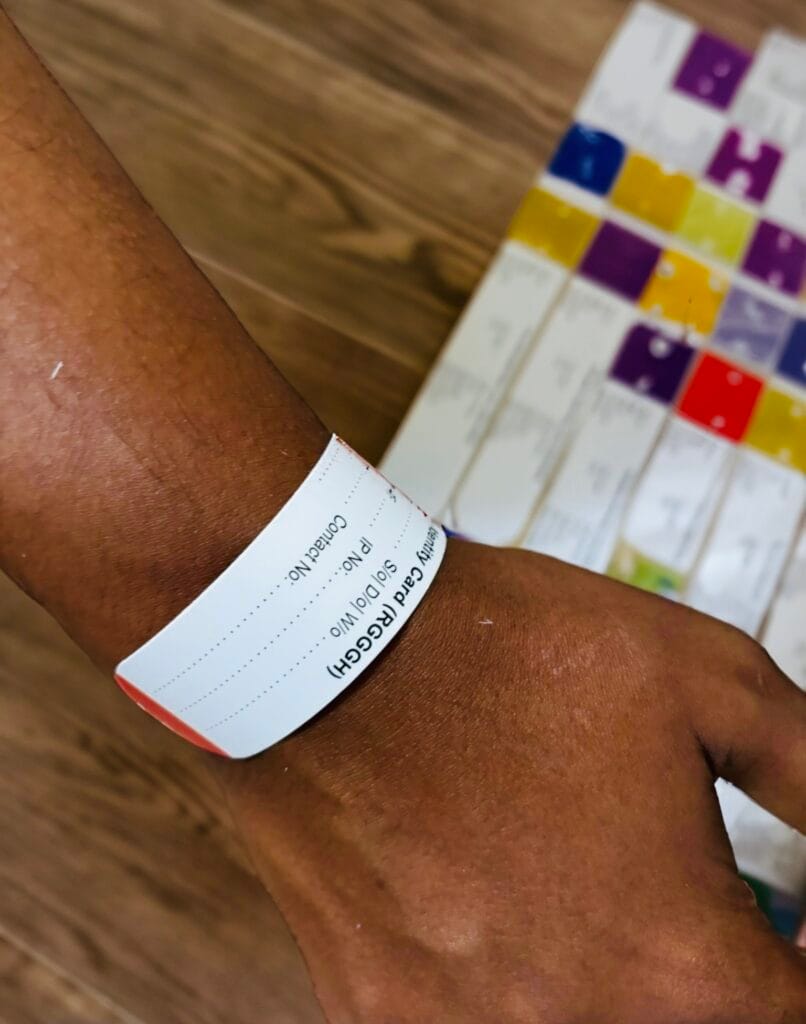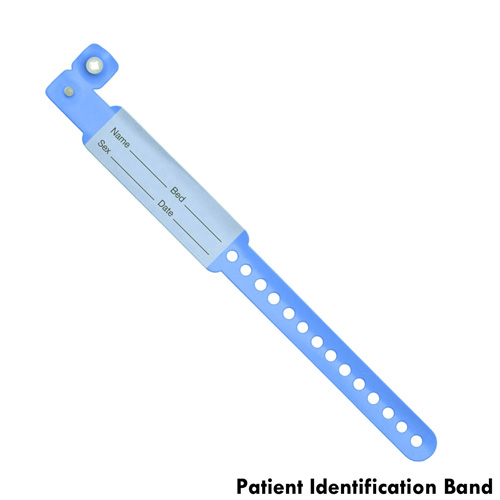The Significance of Using a Patient Identification Band for Every Patient
The Significance of Using a Patient Identification Band for Every Patient
Blog Article
Enhancing Safety And Security: The Importance of Individual Recognition Bands in Healthcare
In the realm of health care, the efficiency of client recognition bands can not be overstated, as they function as an essential safeguard versus misidentification and subsequent mistakes. These bands, often ignored, have crucial info that is crucial for making certain patient safety and security and optimal treatment end results. Nonetheless, the implementation of efficient identification procedures presents several obstacles that doctor need to browse. As we discover the complex duty of these bands, it comes to be obvious that their value prolongs beyond mere identification, raising questions about best techniques and future innovations in person safety and security.
Review of Patient Recognition Bands
Individual identification bands play a crucial function in ensuring the safety and precision of individual care in medical care setups. These bands, commonly worn on the wrist or ankle joint, offer as an important device for confirming person identity, therefore decreasing the danger of mistakes in therapy, drug management, and other health care treatments. Made from resilient products, patient recognition bands usually consist of vital information such as the individual's name, day of birth, clinical document number, and barcodes or QR codes for scanning.
The implementation of patient recognition bands is vital in different healthcare settings, including health centers, outpatient facilities, and lasting care establishments. They add to a methodical strategy in client monitoring, allowing healthcare specialists to rapidly and properly determine people, especially in high-pressure circumstances where swift decision-making is crucial.
Moreover, making use of these bands is lined up with regulative criteria targeted at boosting client safety and security - Patient Identification Band. By making sure that each individual's info is readily available and easily proven, doctor can keep a high criterion of treatment, reduce the incidence of negative events, and foster a society of security within health care organizations
Benefits of Accurate Identification
Accurate identification is basic to improving client safety and care top quality in medical care setups. It functions as the very first line of protection against errors that can cause negative client outcomes. By making certain that each person is properly recognized through dependable means, such as person identification bands, healthcare providers can dramatically decrease the threat of misidentification, which can cause unsuitable therapies, medicine errors, and also surgical mix-ups.
In addition, exact person recognition promotes effective interaction among health care teams. When all team member can consistently recognize patients, they can share important info more successfully, bring about much better control of care. This is specifically important in emergency situation scenarios where prompt treatments are important.
Additionally, precise recognition sustains compliance with governing standards, thus lowering the risk of lawful repercussions for health care centers. It fosters count on in between patients and doctor, as people feel much more safe knowing that their identities are being secured.

Common Obstacles Dealt With
Ensuring effective person recognition in healthcare setups presents a variety of challenges that can jeopardize safety and security and care high quality. People might arrive in a state of confusion or distress, making exact recognition challenging.
Another obstacle is the dependence on human aspects in identification procedures. Health care professionals may accidentally neglect or misunderstand recognition methods, specifically in high-stress settings such as emergency situation departments. This can result in errors, including the management of inaccurate therapies or drugs.
Technological problems additionally position difficulties. Although electronic health record (EHR) systems are made to streamline client identification, system blackouts or customer mistakes can disrupt the procedure. In addition, the physical style of individual ID bands can lead to readability issues, especially in cases where bands are damaged or covered.
Last but not least, irregular training among staff concerning identification protocols can cause voids in understanding and method. Resolving these difficulties is critical for boosting client safety and making sure that recognition bands serve their intended objective successfully.
Best Practices for Implementation
To efficiently implement patient recognition bands in health care settings, companies need to take on a multifaceted strategy that prioritizes modern technology, standardization, and training assimilation. Standardization includes developing clear procedures for the design, application, and usage of identification bands throughout all departments. This makes certain uniformity and lessens the threat of errors linked to differences in band types or labeling techniques.


Training is necessary for all healthcare staff to guarantee they recognize the importance of accurate client identification, just how to appropriately apply and read recognition bands, and the treatments to adhere to in instance of disparities. Normal workshops and correspondence course can enhance this knowledge and promote a culture of safety and security.
Modern technology combination plays a crucial my sources duty in improving the performance of person recognition bands. Making use of barcode scanning or RFID modern technology can streamline the recognition procedure, enabling real-time verification of individual identifications. Furthermore, digital health and wellness record systems need to be set up to consist of informs for mismatches in between the identification band and individual information.
Future Trends in Individual Safety
As healthcare continues to develop, the focus on person safety is likely to intensify, driven by advancements in modern technology and a higher understanding of systemic dangers. Emerging fads indicate a shift in the direction of more integrated systems that take advantage of information analytics, fabricated intelligence, and artificial intelligence to boost client his response recognition procedures. These technologies can help determine potential security concerns before they rise, therefore reducing errors connected with misidentification.
Additionally, the application of blockchain innovation may reinvent how patient data is firmly shared amongst health care suppliers, guaranteeing that identification bands are current and consistently precise. This will not only enhance person security however also facilitate smooth interaction across multidisciplinary teams.

Furthermore, the growing emphasis on tailored medicine is expected to influence client safety methods. By integrating genetic and market info right into recognition systems, medical care specialists can tailor therapies more effectively, minimizing the threats of unfavorable reactions as a result of misidentification.
Conclusion
In conclusion, individual identification bands serve as an essential element in enhancing safety within medical care settings. Inevitably, the continued emphasis on durable recognition protocols will contribute to better client end results and overall security in medical care setups.
In the world of health care, the efficiency of client identification bands can not be overstated, as they serve as an essential safeguard against misidentification and subsequent mistakes.Person recognition bands play a critical duty in making certain the security and precision of client care in health care setups. Made from resilient products, client recognition bands usually consist of crucial information such as the individual's name, date of birth, medical record number, and barcodes or QR codes for scanning.
By making certain that each client is correctly determined with trustworthy ways, such as client identification bands, health care providers can substantially reduce the threat of misidentification, which can lead to inappropriate treatments, drug errors, and also medical mix-ups.
In final thought, client identification bands serve as an essential component in enhancing safety within healthcare i thought about this atmospheres. Patient Identification Band.
Report this page